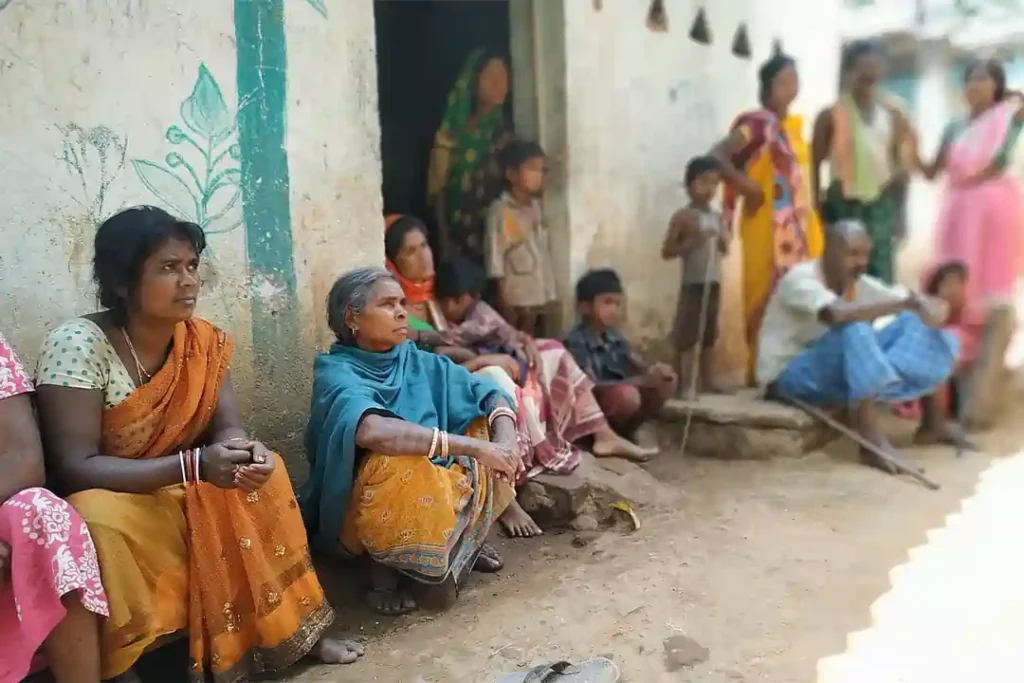New Delhi: In a significant move to address the needs of India’s most marginalized communities, the Ministry of Tribal Affairs has called for a separate enumeration of Particularly Vulnerable Tribal Groups (PVTGs) in the upcoming 2027 Census. This unprecedented request, directed to the Registrar General and Census Commissioner of India (RGI), aims to collect precise demographic data on PVTGs, enabling targeted welfare schemes like the Pradhan Mantri Janjati Adivasi Nyaya Maha Abhiyan (PM-JANMAN). If approved, this would mark the first time these 75 tribal communities, spread across 18 states and the Union Territory of Andaman and Nicobar Islands, are counted independently, addressing long-standing gaps in official data.

Who Are the PVTGs?
Particularly Vulnerable Tribal Groups, formerly known as Primitive Tribal Groups, represent the most socio-economically disadvantaged segments among India’s over 700 tribal communities. First identified by the Dhebar Commission in the early 1960s, PVTGs are characterized by specific criteria: reliance on pre-agricultural technology, low literacy levels, economic backwardness, and stagnant or declining populations. These factors, combined with their geographical remoteness, often relegate them to isolated regions with limited access to basic services.
A recent central habitation-level survey estimates the PVTG population at 45.56 lakh, with the largest concentrations in Madhya Pradesh (12.28 lakh), Maharashtra (6.2 lakh), and Andhra Pradesh (4.9 lakh). Despite their significant numbers, PVTGs have historically been underrepresented in national data. In the 2011 Census, while data on Scheduled Tribes (STs) was collected, only about 40 of the 75 PVTGs were included as STs, leaving the remaining sub-sections of larger tribal communities unaccounted for. This lack of specific data has hindered the design of need-based programs tailored to their unique challenges.
Why a Separate Census Matters
The Ministry of Tribal Affairs, in a letter dated July 17, 2025, penned by Joint Secretary Ajeet Kumar Srivastava, emphasized the critical need for separate PVTG enumeration. The letter, addressed to the RGI, highlighted that these communities are among the “most marginalized and socio-economically backward vulnerable sections” of India’s population. It noted that while the 2011 Census captured data on Scheduled Tribes, it failed to distinctly enumerate PVTGs, creating a data void that complicates targeted welfare efforts.
“Precise enumeration will certainly be of great support towards the formulation and implementation of targeted schemes for PVTGs,” the letter stated. The ministry proposed capturing not only the number of PVTG households and individuals but also their distinctive demographic, cultural, and socio-economic characteristics. To facilitate this process, it requested a meeting with Census officials to discuss logistical arrangements, ensuring accurate data collection in the 2027 Census.
The urgency of this initiative is underscored by the challenges PVTGs face. A peer-reviewed study of 13 PVTGs in Odisha, analyzing research from 2000 to 2023, revealed higher health burdens, poor maternal and child health outcomes, and inadequate access to basic services like education and healthcare. Their reliance on subsistence economies and residence in remote areas further exacerbates their marginalization, making precise data essential for effective policy interventions.
PM-JANMAN: A Catalyst for Change
The push for a separate census is closely tied to the Pradhan Mantri Janjati Adivasi Nyaya Maha Abhiyan (PM-JANMAN), launched by Prime Minister Narendra Modi on November 15, 2023. This flagship scheme targets the 75 PVTGs across over 200 districts, aiming to improve their living conditions within three years. PM-JANMAN focuses on delivering essential facilities, including safe housing, clean drinking water, education, healthcare, and nutrition. It also prioritizes infrastructure improvements like road and telecom connectivity, electricity for unelectrified households, and sustainable livelihood opportunities.
Implemented through 11 specific interventions by nine central ministries, PM-JANMAN represents a collaborative effort to address deep-rooted challenges. However, the ministry argues that without accurate demographic data, monitoring progress and allocating resources effectively remains a hurdle. A separate census enumeration would provide the granular insights needed to ensure the program’s success, enabling policymakers to track outcomes and tailor interventions to specific PVTG needs.
Empowering PVTG Women: A Dual Approach
The welfare of PVTGs also intersects with broader developmental paradigms, particularly women’s development and women-led development. Women’s development involves programs designed to support women, though these may not always include their input in planning or implementation. In contrast, women-led development positions women as leaders, decision-makers, and innovators, fostering greater agency and sustainability.
For PVTG women, who often face compounded vulnerabilities due to gender disparities, adopting a women-led approach could be transformative. Issues like poor maternal health and limited educational access are prevalent among PVTGs, as highlighted in sociological research. Integrating these principles into schemes like PM-JANMAN could empower women to drive community-level change, ensuring more equitable and inclusive outcomes.
The Role of the Registrar General and Census Commissioner
The Registrar General and Census Commissioner of India, established in 1949 under the Union Ministry of Home Affairs, is tasked with overseeing this ambitious proposal. Governed by the Census Act of 1948, the RGI conducts the decennial Housing and Population Census, a cornerstone of national demographic data. Beyond this, it manages the Civil Registration System (CRS) under the Registration of Births and Deaths Act of 1969, the Sample Registration System (SRS) for vital statistics like birth and death rates, and the National Population Register (NPR) under the Citizenship Rules of 2003. The office also conducts the Mother Tongue Survey, documenting linguistic features.
This multifaceted expertise positions the RGI to incorporate PVTG-specific data into the 2027 Census. Experts suggest that enumerating PVTGs, even in remote areas like the Andaman Islands where tribes like the Jarawa reside, is feasible with proper planning and logistical support. The ministry’s proposal includes training enumerators and leveraging technology to capture nuanced data, ensuring accuracy and inclusivity.
Challenges and Opportunities Ahead
Enumerating PVTGs presents logistical and systemic challenges. Their remote habitats, reliance on pre-agricultural economies, and low literacy rates require tailored approaches to data collection. Stagnant or declining populations further highlight the urgency of preserving their cultural and demographic identities. A successful enumeration would not only provide a clearer picture of their socio-economic status but also set a precedent for recognizing other marginalized subgroups in national statistics.
If the RGI approves the ministry’s request, the 2027 Census could become a landmark effort in inclusive data collection. By addressing historical underrepresentation, it would enable data-driven policies to combat marginalization, supporting the estimated 45.56 lakh PVTG individuals across India. The initiative aligns with the government’s broader commitment to socio-economic justice, ensuring that no community is left behind.
A Step Toward Inclusive Development
The Tribal Affairs Ministry’s call for a separate PVTG census is a pivotal step toward equitable development. By prioritizing accurate data, the government aims to bridge socio-economic gaps through targeted schemes like PM-JANMAN. As discussions between the ministry and RGI progress, stakeholders remain optimistic about the potential to transform the lives of India’s most vulnerable tribal communities. With the 2027 Census on the horizon, this initiative could redefine how India addresses marginalization, paving the way for a more inclusive future.
Frequently Asked Questions (FAQs)
1. What are Particularly Vulnerable Tribal Groups (PVTGs), and why are they considered unique?
PVTGs are 75 tribal communities across 18 states and the Union Territory of Andaman and Nicobar Islands, identified as the most marginalized among India’s over 700 tribal groups. First recognized by the Dhebar Commission in the 1960s, they are characterized by pre-agricultural technology, low literacy, economic backwardness, and stagnant or declining populations. Their geographical remoteness and reliance on subsistence economies make them uniquely vulnerable, necessitating targeted welfare programs like PM-JANMAN to address challenges such as poor health, limited education, and inadequate infrastructure.
2. Why is the Tribal Affairs Ministry advocating for a separate PVTG census in 2027?
The Ministry of Tribal Affairs has requested a separate enumeration of PVTGs in the 2027 Census to address historical underrepresentation in official data. In the 2011 Census, only about 40 of the 75 PVTGs were included under Scheduled Tribes (STs), with others not distinctly counted. Precise data on PVTG households, demographics, and socio-economic conditions is essential for designing and implementing targeted schemes like the Pradhan Mantri Janjati Adivasi Nyaya Maha Abhiyan (PM-JANMAN), ensuring resources reach these marginalized communities effectively.
3. What is PM-JANMAN, and how does it relate to the proposed PVTG census?
Launched on November 15, 2023, by Prime Minister Narendra Modi, PM-JANMAN is a flagship scheme aimed at improving the living conditions of the 75 PVTGs across over 200 districts. It focuses on providing housing, clean water, education, healthcare, nutrition, connectivity, electricity, and livelihood opportunities within three years. A separate census is critical for PM-JANMAN’s success, as accurate population and socio-economic data will enable better resource allocation, monitoring, and tailored interventions for these communities.
4. What challenges do face, and how will a separate census help address them?
PVTGs face deep-rooted challenges, including high health burdens, poor maternal and child health outcomes, low literacy, and limited access to basic services due to their remote locations. Sociological studies, such as a review of 13 PVTGs in Odisha from 2000 to 2023, highlight their marginalization. A separate census will provide detailed data on their demographics, cultural, and socio-economic characteristics, enabling policymakers to design need-based programs, track progress, and address specific vulnerabilities like declining populations and economic backwardness.
5. What role does the Registrar General and Census Commissioner of India (RGI) play in this initiative?
The RGI, established in 1949 under the Union Ministry of Home Affairs, oversees India’s Census operations under the Census Act of 1948. It is responsible for collecting comprehensive population data, managing the Civil Registration System, Sample Registration System, National Population Register, and Mother Tongue Survey. The Tribal Affairs Ministry has urged the RGI to include PVTGs in the 2027 Census, proposing arrangements to capture their unique data. The RGI’s expertise and logistical capabilities make it well-suited to execute this historic enumeration, potentially transforming tribal welfare strategies.

